Photography has a unique ability to freeze moments in time, conveying raw emotion, tension, and significance. Some of the most impactful photographs have been awarded the Pulitzer Prize, an honor recognizing exceptional achievements in American journalism and storytelling through imagery. These photographs often document events of resilience, tragedy, hope, and historical significance, capturing the attention of audiences worldwide.
Whether patiently waiting for the perfect shot or unexpectedly stumbling upon a moment of fate, photographers risk their safety, face difficult decisions, and bear witness to both the best and worst of humanity. Here are some of the most compelling Pulitzer Prize-winning photographs that have left a lasting impression on history.
1968: “Kiss of Life”
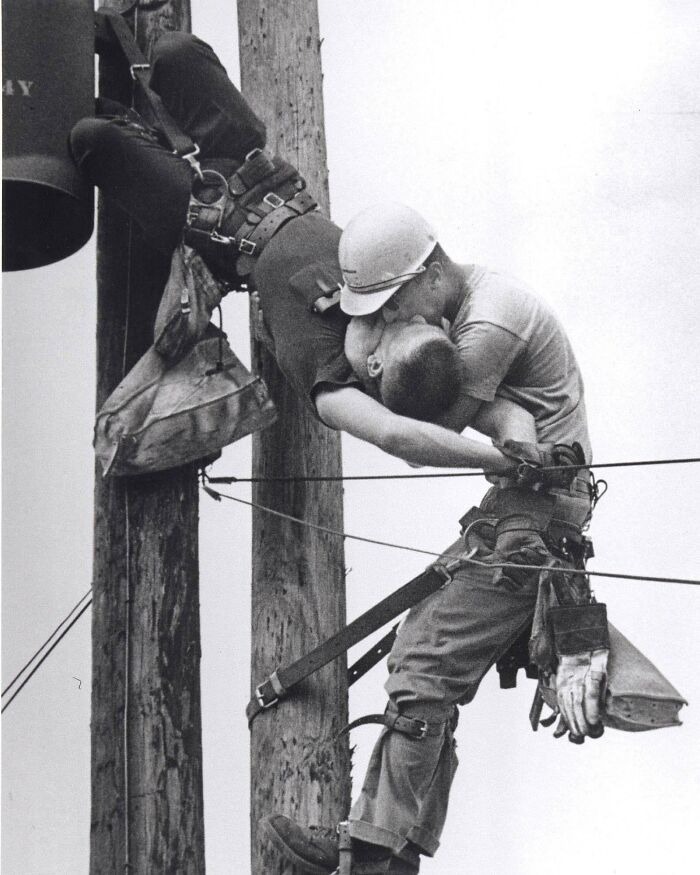
Captured by Rocco Morabito, this powerful image tells a story of survival and heroism. While driving, Morabito noticed an electrician hanging upside down from his safety belt after being struck by 4,160 volts of electricity. Without hesitation, he called for an ambulance. In the meantime, another lineman climbed up and performed mouth-to-mouth resuscitation on his unconscious colleague. Morabito took the now-iconic shot at the exact moment of rescue, earning him the Spot News Prize for capturing a life-saving act under intense circumstances.
1958: “Faith and Confidence”
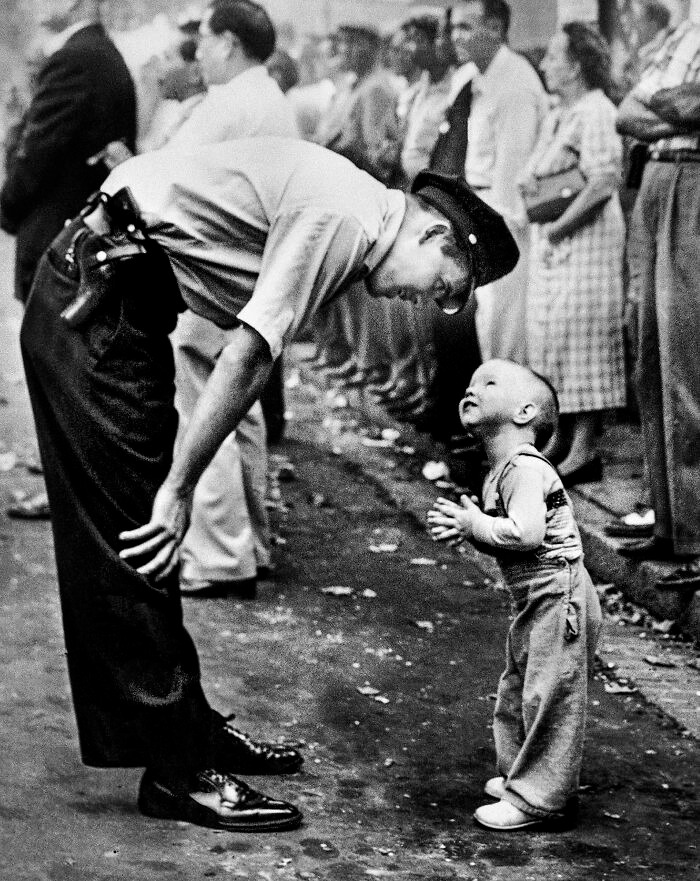
During a parade in Chinatown, Washington, D.C., police officer Maurice Cullinane was seen engaging in a heartwarming moment with two-year-old Allen Weaver. The boy had wandered a bit too close to a parade dragon, prompting the officer to gently warn him. Photographer William C. Beall managed to capture this tender exchange, a moment of simple yet profound human connection. The Pulitzer Prize Board praised it as “an appealing picture which made a profound impression on readers.”
1944: “Homecoming”

Photographer Earle Bunker spent over 24 hours waiting for a train carrying returning World War II soldiers. Among them was Lieutenant Colonel Robert Moore, who had been away from his family for 16 months. When he finally stepped off the train and embraced his loved ones, Bunker captured the raw emotion of the reunion. This photograph resonated with countless families experiencing similar moments across the country, making it an unforgettable symbol of wartime sacrifice and relief.
1976: “Fire Escape Collapse”
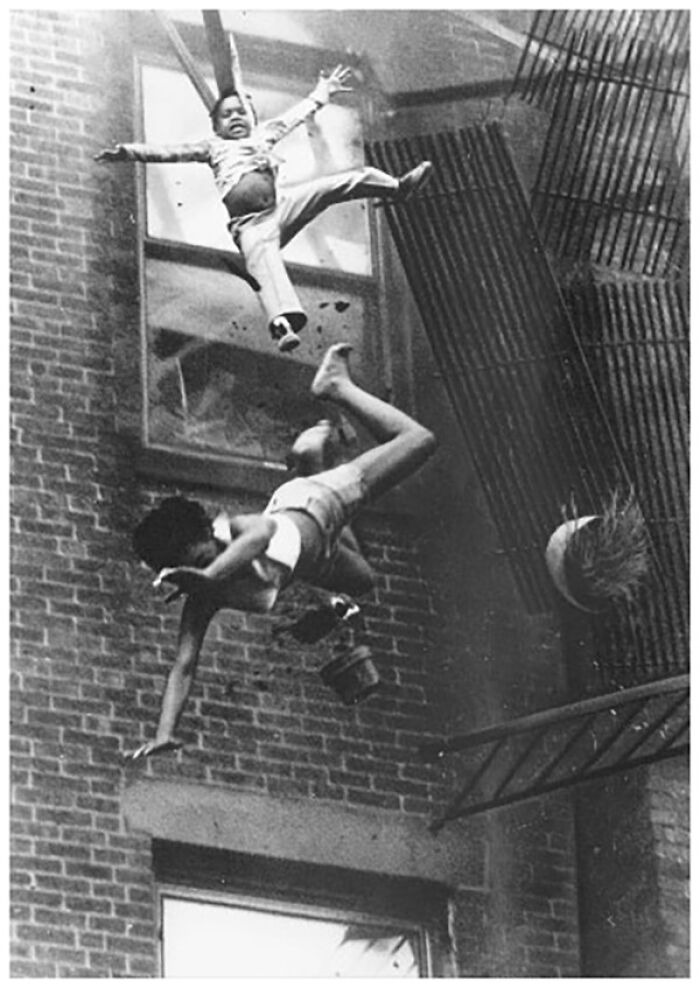
Stanley Forman’s chilling image documented a fire escape collapse in Boston. In the photograph, a 19-year-old woman and her two-year-old goddaughter were seen plummeting to the ground after the fire escape they were standing on gave way. Tragically, the young woman did not survive, but the child lived. The harrowing image prompted a national discussion on building safety, leading to stricter fire escape regulations across the United States.
1954: “Rescue on Pit River Bridge”
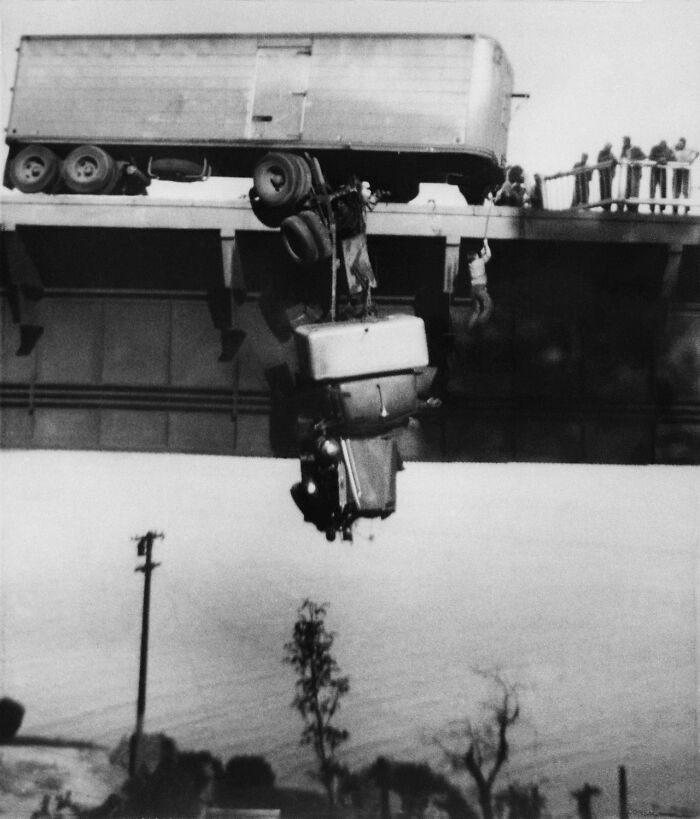
This dramatic rescue was captured by Virginia Schau, the first woman and second amateur photographer to win the Pulitzer Prize for Photography. While taking her parents on a fishing trip, she witnessed a truck accident that left the vehicle dangling 40 feet above a river. Acting quickly, she took a shot using her Kodak Brownie camera, even though she only had two exposures left. The image documented the dramatic moment as rescuers pulled the truck drivers to safety, highlighting an extraordinary feat of bravery.
1951: “Flight of Refugees Across Wrecked Bridge in Korea”
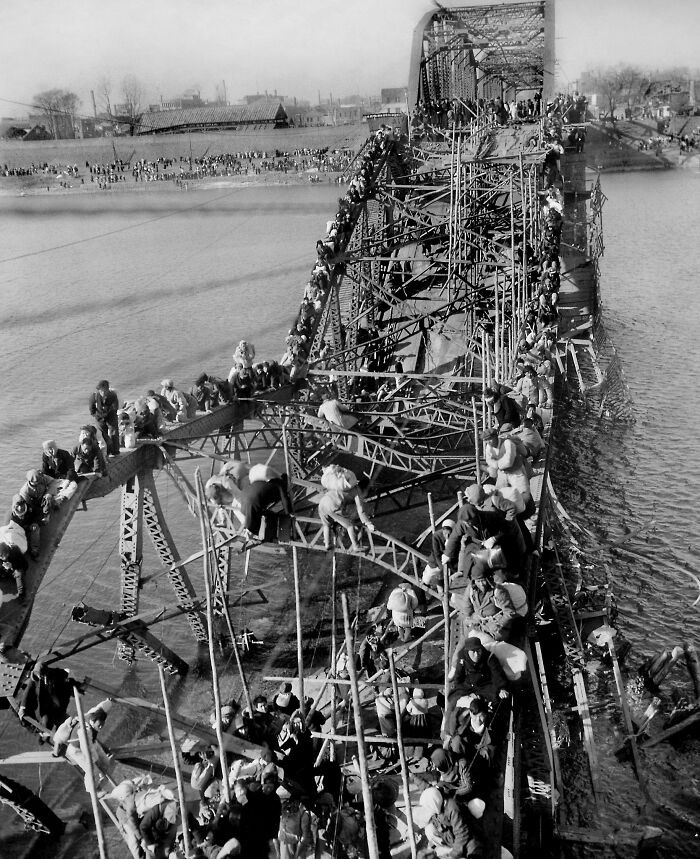
War photographer Max Desfor was traveling with American frontline troops during the Korean War when he came across a harrowing sight. Hundreds of Korean war refugees were attempting to cross the Taedong River using the remnants of a bombed-out bridge in freezing temperatures. The image conveyed the desperation and resilience of civilians caught in the crossfire of war, making it one of the most unforgettable photographs of the conflict.
1974: “Burst of Joy”
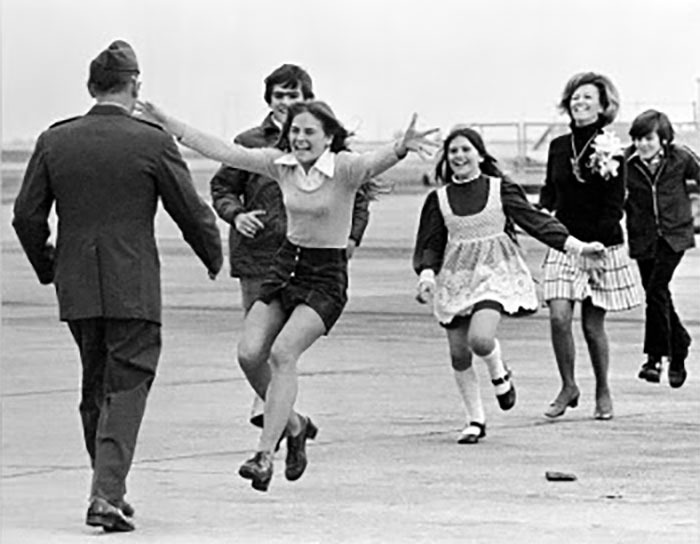
This emotionally charged photograph by Slava “Sal” Veder captures a seemingly joyous moment—a prisoner of war, Colonel Robert Stirm, returning home from a North Vietnamese prison camp. His family is seen rushing toward him with open arms. However, despite the image symbolizing hope and healing, Stirm later revealed that he had received a letter from his wife three days prior, informing him that their marriage was over. The photograph remains a complex reminder of both reunion and personal loss.
1947: “Desperate Escape from Blazing Hotel”
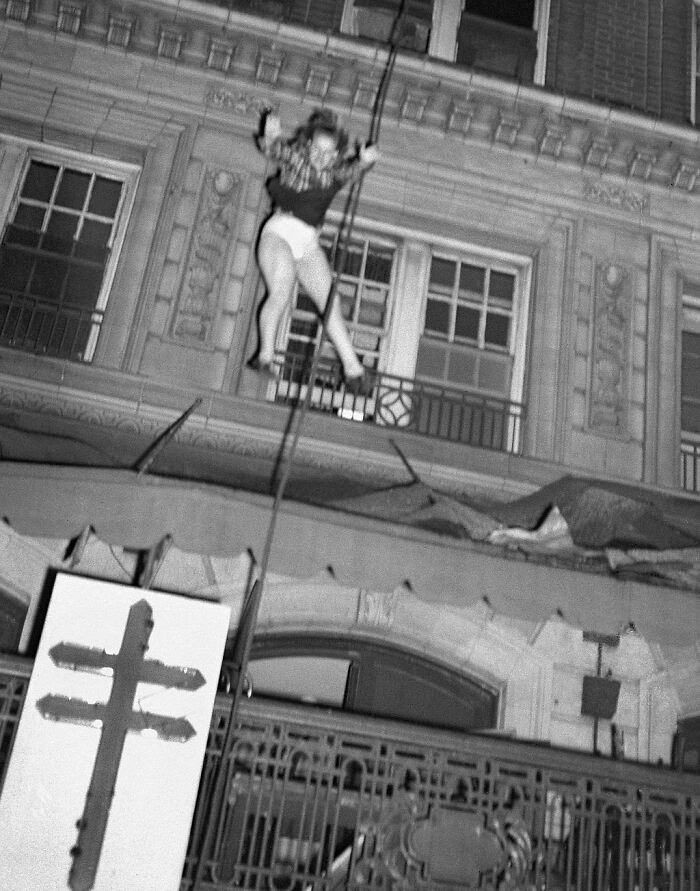
The Winecoff Hotel fire in Atlanta, Georgia, was one of the deadliest in U.S. history, claiming 119 lives. A 24-year-old graduate student from Georgia Tech captured a haunting image of a person leaping from the burning building in a desperate attempt to escape. Using his Speed Graphic camera and last flashbulb, the photographer immortalized the tragic event, highlighting the importance of fire safety in high-rise buildings.
1950: “Near Collision at Air Show”
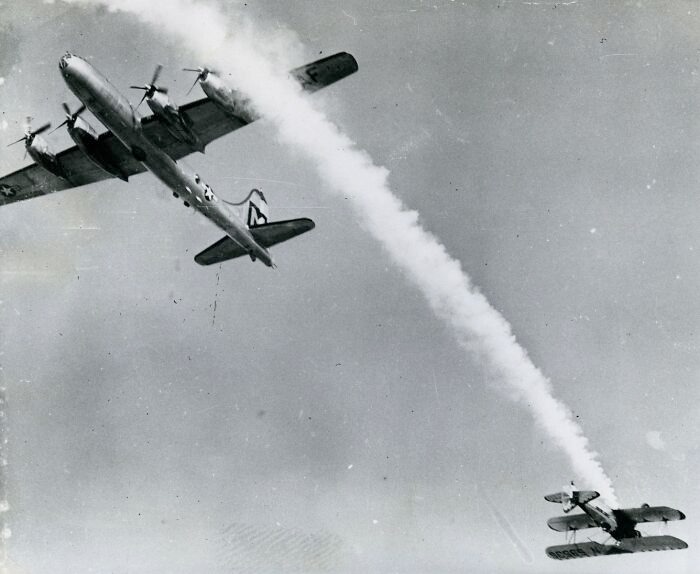
Photographer Bill Crouch was simply enjoying a day off at an air show when he witnessed a terrifying moment. A biplane and a massive B-29 bomber nearly collided in front of a crowd of 60,000 spectators. The larger plane was supposed to pass through the smoke trail left by the biplane but miscalculated, coming dangerously close to disaster. Crouch captured the split-second moment, showcasing the intensity of aerial stunts and the thin line between spectacle and catastrophe.
1957: “Andrea Doria Sinking”
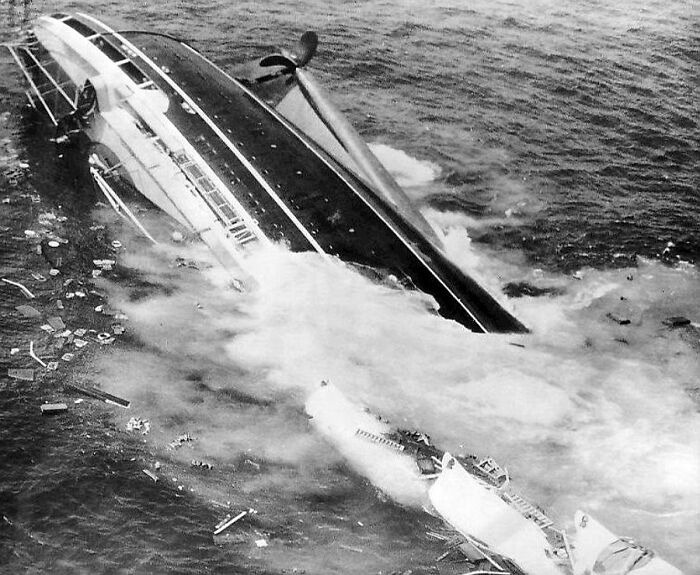
In the final moments before the luxury ocean liner Andrea Doria slipped beneath the waves, Harry Trask captured a series of images that documented the ship’s demise. Battling airsickness, he managed to convince the pilot of a small aircraft to make multiple passes over the wreck site. His efforts resulted in 16 photographs, one of which earned him the Pulitzer Prize. The image remains one of the most recognized depictions of maritime disasters in modern history.
Leave a Reply